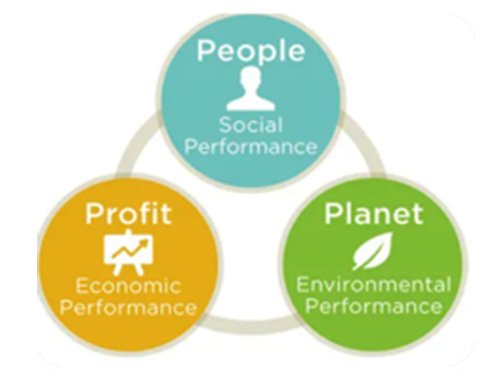
First postulated by John Elkington in his 1994 book “Cannibals With Forks: Triple Bottom Line of 21st Century Business” the theory argues that businesses should account for and report three bottom lines (profit, people, and planet). That businesses must focus not only on financial performance but measure the level of commitment to social responsibility and environmental impact which equals the full cost of doing business.
Today, all well-managed businesses are aware that customers and the greater public expect them to adopt practices that are socially and environmentally conscious. Companies that run sustainable operations and have a community commitment. Employees too want their companies to be socially responsible.
Is A Triple Bottom Line (TBL) Doable and Measurable?
Financial profitability measures are easily quantified by accounting and financial reporting principles. Social and environmental measures are very much more subjective. How can management maximize financial return while maximizing its social good? Furthermore, who would decide how good its social and environmental deeds were?
Many businesses now grapple with the supply-chain issue of obtaining less expensive products or components at the expense of miserable working and living conditions of laborers and unrestrained harm to the natural environment. Businesses have become much more conscious and responsible in responding to these issues, as well as, consumers’ demands for corporate adherence to ‘good’ social and eco-friendly business practices.
‘Financial’ Performance Becomes ‘Outcome’ Performance
Financial performance measurements are established and universal. Social and environmental measurements are elusive and untested. Social metrics may include better health, education, local employment, improved family cohesion. Environmental metrics: reduced forestation, lower greenhouse emissions, cleaner water, less soil degradation, commercial and residential building energy savings. Moreover, those rallying for the adoption of TBL demand that businesses address their relationships with employees, suppliers, communities, and even governments (local and national). Known as the ESG Scorecard (Environmental, Social, and Corporate Governance) it would reflect each company’s ‘overall outcome’ performance. However, the ‘overall outcome’ is not defined.

One must never forget the ever-present issue of cost. The terms: ‘full cost accounting’, ‘natural capital’, and ‘social capital’ have entered the lexicon and are taking on special significance as the TBL theory gains traction, particularly with governments.
In the 1970s Milton Friedman argued that social responsibility and government interference in business will always be harmful to profits. Today, however, the combination of financial fiduciary duty and recognition of the need to address ESG concerns is becoming increasingly important and, further, a question of marketing and branding practicality.
As good intended as they are, the ESG Scorecard has major shortcomings:
- It is unenforceable globally. People are unwilling to pay for other nations’ ‘lost’ eco-systems or to ‘clean up’ their environments. This has been equated to poor people in rich countries paying rich people in poor countries – fostering rampant scorecard and financial corruption.
- Can a TBL framework be applied in a practical fashion on a worldwide basis?
- Who and how would TBL be administrated and enforced? Would social issues take precedence over environmental ones, and how would that impact financial performance and capital markets?
- The ESG Scorecard can not be quantified. It must be based upon a cost/benefit analysis structure which again leads to ‘iffy’ results.
Earth’s Carrying Capacity
Any rational person knows that the earth can sustain only so much ‘use’. It can not sustain unlimited non-renewable extraction – it has a ‘carrying capacity as to population. An honest conversation on this topic pits people (and their needs) against the planet’s ability to provide. Yes, technology aids in this co-existing eco-battle but in the long-term global population growth becomes the 800-pound gorilla in the battle.
Cutting back on energy sources, as some postulate, exacerbate the problem. Conserving, re-cycling, re-use is all great and working in many parts of the planet but this is not enough. The median age of the three most populous countries and their life expectancies are China: 38/77, India:28/69, and the U.S.: 38/78. This year, the countries with the fastest population growth rates are Syria, Niger, Angola, Benin, and Uganda. All poor, underdeveloped, and essentially autocracies. These five are followed by five other African nations to make the top 10.
Summary: A Bridge Too Far
Even John Elkington has called for a rethink of the TBL. He argues that his original idea was to “encourage businesses to manage the wider economic, social, and environmental impact of their operations. But its practical use as an accounting tool has now undermined its value”.
As a piece of the greater ESG movement, the TBL theory, burdened with nationalistic/political baggage and unworkable demands by social zealots is now unachievable in any form.
Looking for an ESG coach to ensure your business is meeting the demands and expectations of consumers regarding social and environmental issues. 4M Performance can provide that guidance and make recommendations that will differentiate and place your business at the forefront of the ESG movement. Contact us. 4mperformance.com






0 Comments